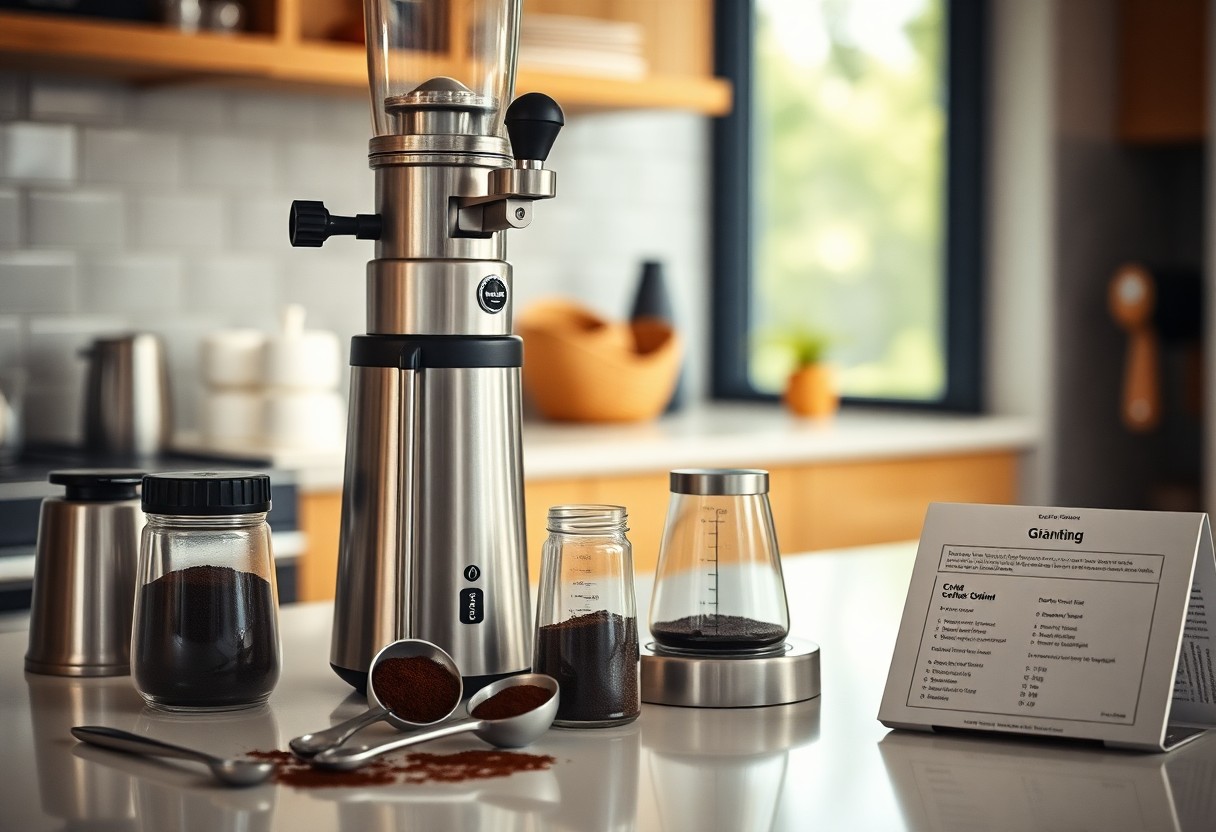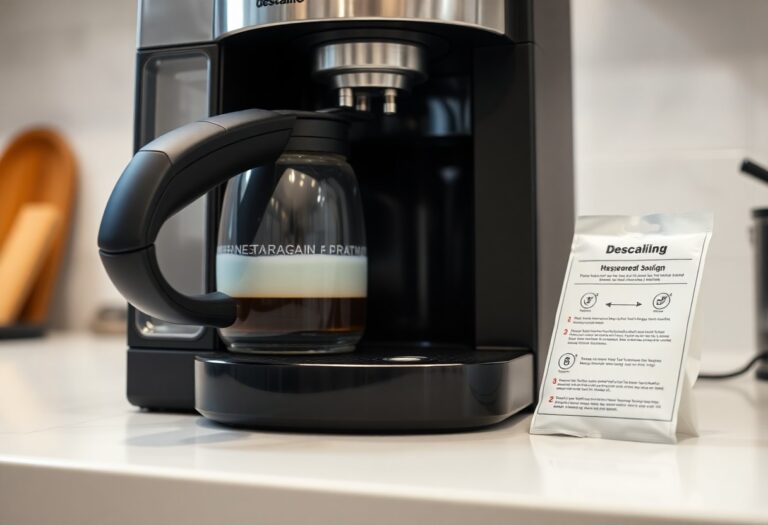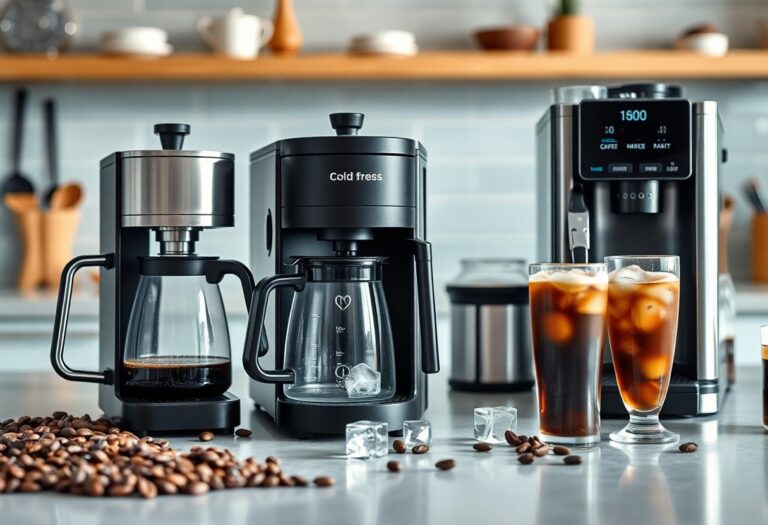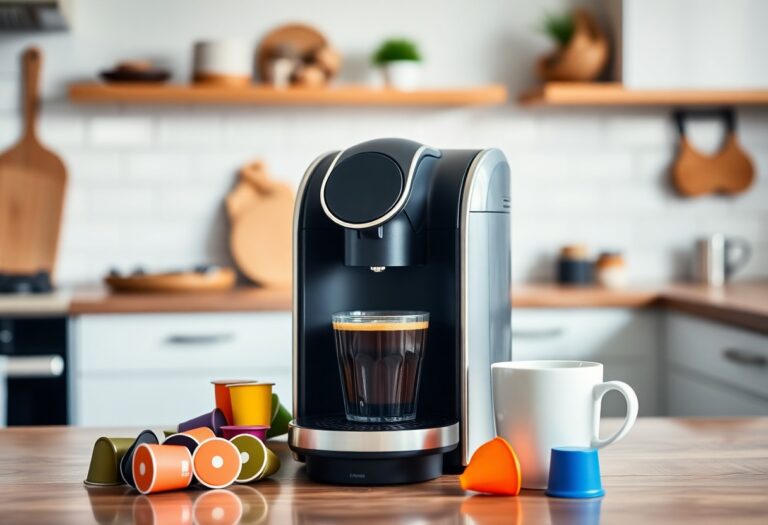What Grind for a Coffee Machine – Grinding Specifications
Over time, the grind size of your coffee beans can significantly influence the flavor and potency of your brew. Choosing the right grind for your coffee machine is crucial for extracting maximum flavor without compromising on quality. Whether you’re using a French press, drip coffee maker, or espresso machine, each requires a specific grind size to optimize your brewing process. By understanding these grinding specifications, you can enjoy a consistently delicious cup of coffee tailored to your taste.
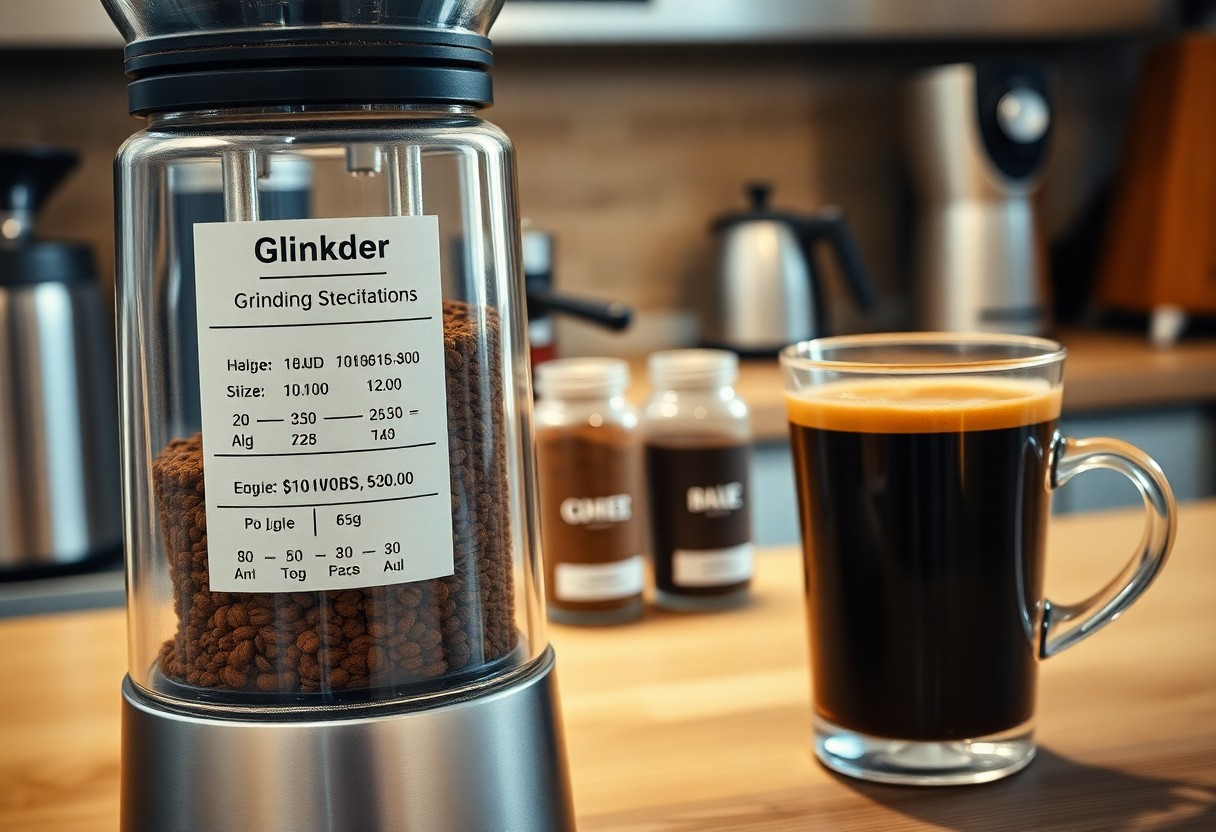
Key Takeaways:
- Different brewing methods require specific grind sizes; for example, espresso requires a fine grind while French press calls for a coarser texture.
- Grind consistency is vital for optimal extraction; uneven grinds can lead to over-extraction or under-extraction of flavors.
- Freshly ground coffee enhances flavor and aroma; investing in a good quality grinder can significantly improve your coffee experience.
- Coffee grind size can impact brew time; finer grinds usually result in quicker extraction, while coarser grinds take longer.
- Experimentation is encouraged; adjusting grind size can help find the perfect balance for your preferred taste and brewing style.
The Art of Grind Size: Flavor Profiles and Brewing Methods
The grind size can dramatically alter your coffee’s flavor profile. Coarse grinds are best suited for methods like French press, where a longer extraction time allows fuller flavors to develop, while fine grinds complement espresso brewing, producing a rich and concentrated shot. Exploring The Complete Guide to Grind Size and Coffee Brew Methods can help you master these distinctions and optimize your coffee experience.
The Impact of Grind Size on Extraction
Extraction is the process of dissolving flavor compounds from the coffee grounds into water, and grind size significantly affects this. Finer grinds increase surface area, leading to a quicker extraction, while coarser grinds slow it down. If you’re seeking a balanced cup, achieving the right grind size is key to achieving optimal extraction time, allowing the complex flavors to bloom without over-extracting or under-extracting them.
Matching Grind Size to Brewing Techniques
Matching the right grind size to your chosen brewing method can elevate your coffee game. For instance, a fine grind is ideal for espresso machines, which utilize high pressure, while a medium grind is optimal for drip coffee makers. Conversely, a coarse grind performs best in immersion brewing methods, like French press or cold brew, where the coffee steeps longer in water. Having a variety of grind sizes at your disposal allows you to tailor your coffee experience to highlight its best traits.
Taking into account the brewing method you choose significantly influences the precision of your grind size selection. For pour-over techniques, a medium-fine grind ensures even saturation and even extraction. On the other hand, a Turkish coffee pot demands an ultra-fine grind to achieve its signature bold and rich flavor. Adapting your grind size with respect to different techniques leads to a consistently satisfying cup, encouraging experimentation to find your ideal brew.
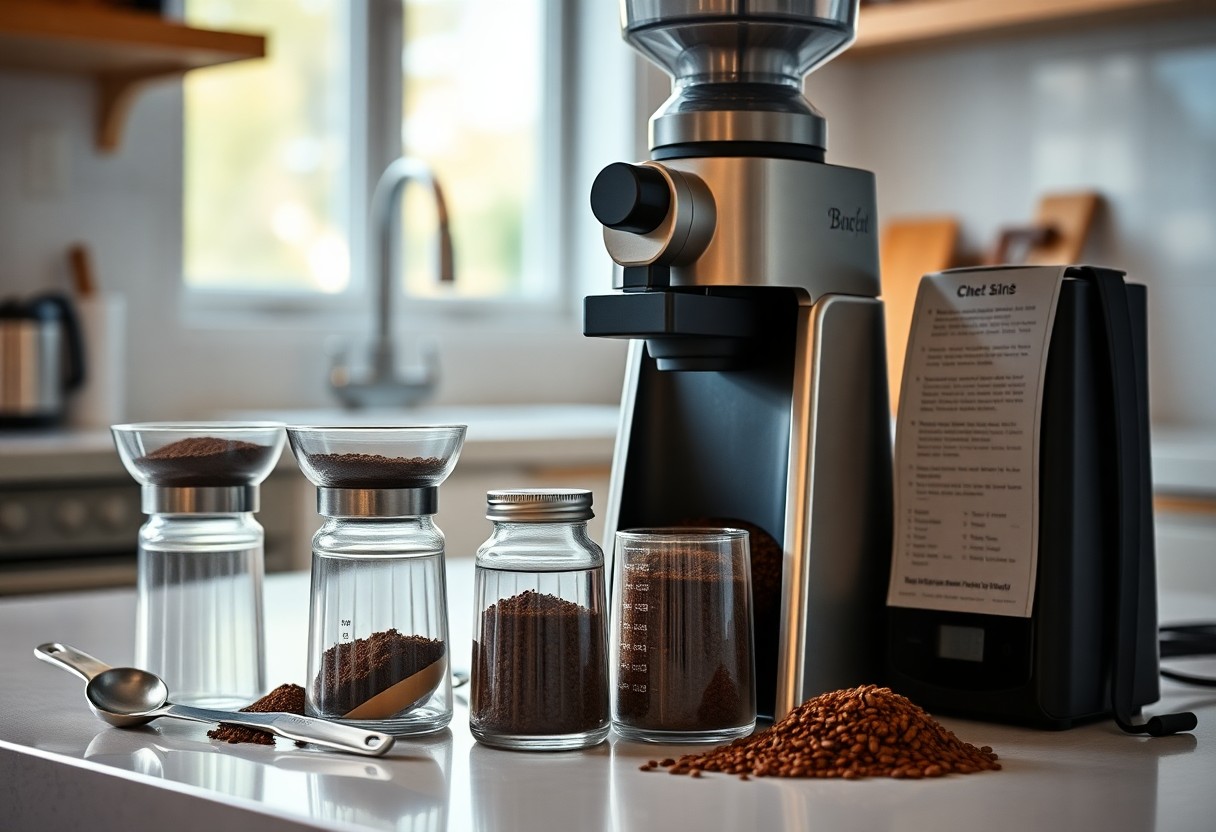
The Science of Coffee Grinding: Understanding Particle Distribution
Your brewing experience is significantly influenced by the particle distribution achieved during the grinding process. Different brewing methods extract flavors based on how uniform or varied the size of the coffee particles is. Ignoring this aspect can lead to over-extraction or under-extraction, resulting in a brew that lacks the desired richness or clarity. A consistent grind size ensures that water flows evenly through the coffee grounds, promoting a balanced extraction and yielding a flavorful cup of coffee.
The Role of Grind Uniformity
Uniformity in grind size allows for an even extraction of flavors, which is vital for achieving a harmonious cup of coffee. Variations in particle size can result in some particles being over-extracted, leading to bitterness, while others are under-extracted, resulting in sourness. You should aim for a consistent grind, ensuring that all particles contribute equally to the overall flavor profile.
The Influence of Grind Size on Brew Time
Grind size directly impacts brew time—smaller particles expose more surface area to water, leading to faster extraction. Conversely, larger particles require more time in hot water to extract flavors optimally. This means that when you adjust the grind size, you also need to consider the brewing duration to achieve the optimal taste balance.
For instance, if you’re brewing espresso, a fine grind permits a 25-30 second extraction, resulting in a rich and concentrated flavor. Meanwhile, a coarser grind used in methods like French press will require longer steeping times, typically around 4 minutes, to extract the desirable flavors. Neglecting the relationship between grind size and brew time can easily result in a bitter or weak cup, so adjusting both elements together is key to mastering your coffee-making process.
Choosing the Right Grinder: Burr vs. Blade
With various grind options available, selecting the right grinder is vital for the perfect brew. Among the two main types, burr and blade grinders stand out. Burr grinders use two revolving abrasive surfaces to crush coffee beans to a uniform size, while blade grinders employ a spinning blade to chop them. Each method impacts the extraction process during brewing and ultimately affects flavor and aroma in your cup of coffee.
Advantages of Burr Grinders
Burr grinders consistently produce uniform particle sizes, allowing for optimized extraction during brewing. This leads to a more balanced flavor profile compared to other grinding methods. Many burr grinders also have customizable settings, giving you control over the grind size to suit different brewing techniques, from espresso to French press. The longevity of burr grinders also sets them apart, as they tend to last longer than their blade counterparts.
Why Blade Grinders Fall Short
Blade grinders often result in inconsistent grind sizes, leading to uneven extraction. This inconsistency can enhance bitterness or sourness in your coffee, ruining the overall taste experience. Because they chop beans rather than crush them, you’ll likely end up with fine powder along with larger chunks, complicating the brewing process and affecting flavor extraction.
In addition to their inconsistent grind, blade grinders typically generate heat through friction, which can further compromise the coffee’s flavor. Essential oils released during the grinding process are often lost, contributing to a dull cup. On average, you might find that blade grinders produce a more muted flavor profile, failing to bring out the intricate notes found in high-quality beans. Investing in a burr grinder thus ensures that you unlock the full potential of your coffee, yielding a much better final product.
Fine-Tuning Your Grind: Achieving Consistency and Precision
The quest for the perfect coffee starts with getting your grind right; consistency and precision play a vital role in extracting the best flavors from your beans. A uniform grind size ensures that water flows evenly through the coffee bed, preventing over-extraction or under-extraction. Experimenting with your grinder’s settings will help you hone in on the ideal coarseness or fineness tailored to your preferred brewing method, whether it’s espresso, pour-over, or French press. Pay attention to your technique, as minor adjustments can lead to significant improvements in taste.
Adjustments for Different Roasts and Origins
Roast profiles and bean origins dictate the ideal grind size for achieving optimal flavor. Lighter roasts often benefit from a finer grind to enhance their brightness and acidity, while darker roasts may require a coarser grind to prevent bitterness. Regional variations, like Ethiopian or Guatemalan beans, can introduce unique characteristics that might warrant a specific grind adjustment to maximize their potential. Tailoring your grind to the distinctive traits of each roast invites a richer sensory experience in every cup.
The Importance of Freshness in Grind
The freshness of your coffee grounds significantly impacts flavor. Ground coffee begins to lose its aromatic compounds within minutes after grinding, leading to a dull and stale taste profile. Ideally, you should grind your beans just before brewing for optimal freshness. Home grinding not only guarantees a vibrant cup, but also allows you to explore flavor nuances that pre-ground options simply can’t match. Using fresh, high-quality beans will further enhance the overall coffee experience.
Ground coffee can start to lose imperative oils and flavors rapidly, which is why brewing immediately after grinding is recommended. The oxidation process drastically alters taste, diminishing the complex notes that characterize good coffee. For instance, taste testing freshly ground coffee can reveal flavors of berries, florals, or chocolate that might be subdued in stale grounds. By committing to a fresh grind, you elevate your daily brew, making it a more enjoyable experience, cup after cup.
Grinding for Specialty Brews: Factors to Consider
Understanding your desired brew style is vital for achieving the best flavor from your coffee. Different brewing methods require specific grind sizes to optimize extraction, so consider the following factors:
- Brew Method – Each method, whether drip, pour-over, or French press, demands a distinct grind size.
- Flavor Profile – Experimenting with grind sizes affects boldness and nuances in taste.
- Brewing Time – Finer grinds generally require shorter brew times, while coarser grinds can enhance longer steeping methods.
After determining these factors, you can fine-tune your grind for the ideal cup.
Espresso: The Need for Fineness
For espresso, achieving a fine grind is imperative to create the rich, concentrated shot you desire. The extraction process is quick, typically lasting around 25-30 seconds, which means the coffee grounds must be finely ground to increase the surface area and facilitate rapid extraction of flavors. A grind size too coarse can lead to under-extraction, resulting in a sour and weak espresso, while a size too fine may cause over-extraction, generating bitterness. Focus on a grind that feels like table salt for optimal results.
French Press: Embracing Coarseness
French press coffee excels with a coarse grind, allowing for full immersion brewing without over-extraction. Coarse particles ensure water flows smoothly without clogging the mesh filter, preventing unwanted bitterness while allowing the rich oils and flavors to be released. This method often involves a steeping time of 4-5 minutes, during which water can extract the desired flavors from the coarsely ground coffee.
In a French press, coarseness not only enhances the brewing process but also impacts the final taste profile of your drink. Larger particles create a balanced extraction, emphasizing the coffee’s body and aroma while reducing the chances of sediment ending up in your cup. You’ll notice a smooth mouthfeel and a more pronounced flavor, making the coarse grind a pivotal choice if you’re aiming for that distinctive French press experience.
To wrap up
Summing up, understanding grinding specifications for your coffee machine is key to achieving the perfect cup. You’ll want to select the right grind size based on your brewing method, whether it’s coarse for French press or fine for espresso. The grind consistency also matters, as uniform particle size ensures even extraction. By paying attention to these details, you can greatly enhance your coffee-making experience and enjoy richer flavors every time you brew.
FAQ
Q: What is the importance of grind size for a coffee machine?
A: The grind size significantly affects the extraction process of coffee. A finer grind allows for greater surface area exposure to water, leading to a more intense flavor extraction, while a coarser grind results in a milder brew. Different brewing methods require specific grind sizes to maximize flavor and minimize bitterness or sourness, ensuring a balanced cup of coffee.
Q: What grind size should I use for a drip coffee maker?
A: For a drip coffee maker, a medium grind size is recommended. This size strikes a balance between too fine, which can lead to over-extraction and bitterness, and too coarse, which often results in under-extraction and a weak flavor. A medium grind resembles granulated sugar and is optimal for a standard brewing duration of around 4 to 6 minutes.
Q: What is the best grind size for espresso machines?
A: Espresso machines require a fine grind size, as espresso brewing works with high pressure and short extraction times. A fine grind increases the surface area for water contact, which is needed to extract the rich flavors and aromas typical of espresso. The grind should be similar to table salt—this allows for a quick and efficient extraction while maintaining the desired crema atop the espresso.
Q: How does the grind size affect cold brew coffee?
A: When making cold brew coffee, a coarser grind size is preferred. This allows for a slower extraction process, resulting in a smoother and less acidic flavor profile. A coarser grind reduces the risk of over-extraction since cold brewing takes a longer time—typically 12 to 24 hours. The larger coffee particles also make it easier to filter out the grounds after brewing.
Q: Can I adjust the grind size for a French press, and how should I do it?
A: Yes, you can and should adjust the grind size for a French press. A coarse grind is recommended for this method, which helps prevent clogging of the filter and allows for a balanced extraction over the steeping time of about 4 minutes. The grind should resemble sea salt. If the coffee tastes bitter, it may indicate an overly fine grind, while a weak flavor may suggest that the grind is too coarse.

